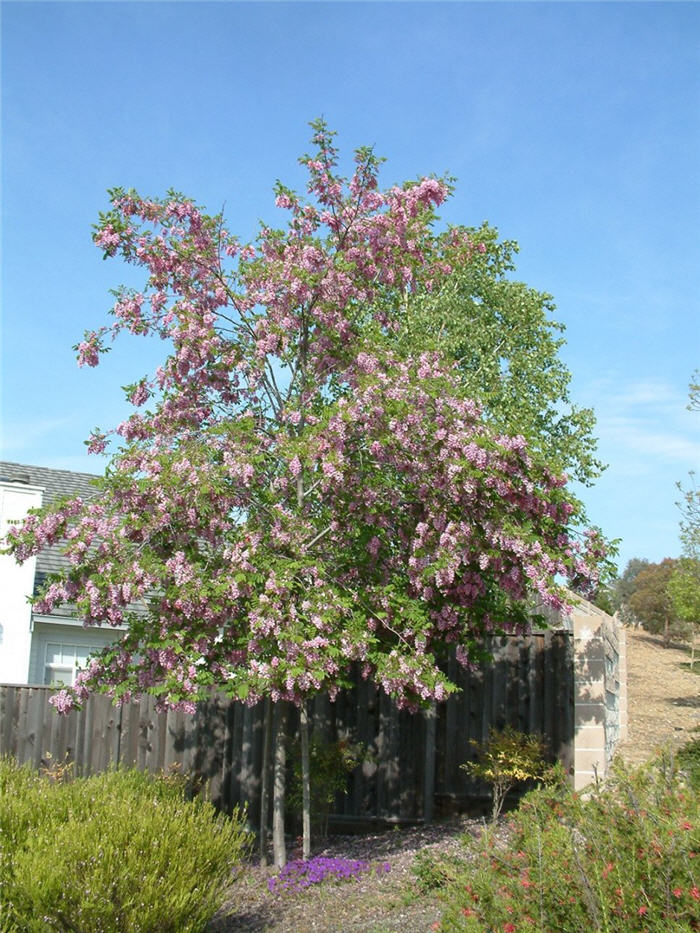| Botanical Name: Robinia 'Idaho' | |
| Common Name: Idaho Locust |

-
Anatomy
-
Culture
-
Design
Plant Type
Tree
Height Range
25-40'
Flower Color
Pink
Flower Season
Spring
Leaf Color
Light Green
Bark Color
Brown
Fruit Color
n/a
Fruit Season
n/a
Sun
Full
Water
Medium
Growth Rate
Moderate
Soil Type
Sandy, Clay, Loam, Rocky, Unparticular
Soil Condition
Average, Poor, Well-drained, Dry
Soil pH
Neutral
Adverse Factors
Attracts Bees, Thorns/Spines
Design Styles
English Cottage, Mediterranean, Ranch, Spanish, Woodland
Accenting Features
Fragrance, Showy Flowers
Seasonal Interest
Spring
Location Uses
Background, Shrub Border, Parking Strip, Walls / Fences
Special Uses
Cut Flowers, Shade Tree
Attracts Wildlife
Birds, Hummingbirds
Information by: Stephanie Duer
Photographer: Seatree Nursery/Frommer
Photographer: Seatree Nursery/Frommer
-
Description
-
Notes
Idaho Locust is a medium sized tree that grows to about 40 feet tall and 15 to 20 feet wide. Small, light green pinnate leaves turn yellow in autumn. 6 to 8 inch long pendents of rose-pink, fragrant flowers bloom in spring. Idaho Locust has a more open habit than Black Locust, and it has few or no seed pods, but it does have thorns.
Grows best in full sun in well drained soil, though it will tolerate part sun situations. Tolerates high temperatures, poor soils, nitrogen-poor soils, and high pH. It does have a history of breakage in snow storm events in SLC.